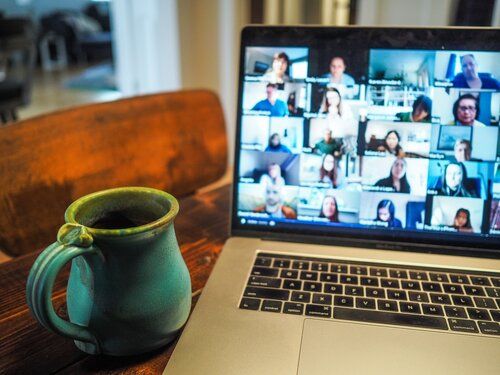4 reasons why zoom meetings can make you feel tired, and how to fix it
2020 and COVID-19 have left many of us feeling anxious or stressed, with 'when will this end?' being the burning question on everyone's mind. However, anxiety isn't the only emotion many are feeling; psychologists are reporting more people are feeling tired, groggy and fatigued - even if they've spent most of their day working from home. But, why?
Along with the lack of mobility and environmental change, experts are pointing their fingers at the dramatic change in our work routines and lack of structure. Specifically, the increase in digital video communication.

Zoom.com has reported a "balloon" in usage since the pandemic hit with a 20x increase in daily attendees. The total average daily participants in December 2019 was at 10 million, but by March 2020 more than 200 million meeting participants attended calls each day. "Zoom fatigue" has become a new buzzword since COVID-19 restrictions started and it doesn't show any sign of stopping. So, why are we feeling this tired in our new, comfortable, digital world?

Fewer breaks
A survey by Airtasker on work productivity found that a lack of environmental distinction between work and home has resulted in an increase in work hours. Due to the spike in communication systems such as Zoom and Slack, employees are now more accessible than ever. As a result, afternoon walks or coffee breaks are adding to stress rather than relieving it, as many have become worried about missing a buzz or a ping and therefore appearing as though we are not working and slacking off.
Both a short walk and a structured break schedule have become more and more popular for increased productivity. A strategy that can be used to prioritise breaks and avoid fatigue is called the Pomodoro technique. This is a concept that allows for scheduled, structured 5-minute breaks between each 25-minute work interval, followed by a longer 30-minute break once five working blocks are completed. Aside from forcing you to get up from your desk and step back from your work, this technique also helps you 'focus-in' on specific tasks in the allocated 25-minute time blocks.
If you feel anxious about taking a break, simply communicate with your team and let them know you're trying to be more structured and productive. Let them know if you're going to be unavailable or stepping out to reduce a surprise call to duty.
Pressure to multitask
Zoom calls require a lot of concentration, but trying to multitask during them can really wear us down. A study performed by the University of Michigan found that switching between tasks can cost as much as 40% of productive time, leaving you feeling overwhelmed and unproductive.
In your next Zoom call, try turning off notifications. Put chat applications, such as Slack, on 'do not disturb' mode, put your phone face-down and try to find a quiet space to attend the meeting. It's tempting to multitask - especially when you're not physically in the same room together and you have multiple channels buzzing at the same time - but, ultimately, waiting will allow you to address each task properly. Interestingly, you will probably find you're more likely to do this for a virtual call than a face-to-face one. Despite our raised awareness about meeting etiquette, it's a constant challenge to get attendees to 'tune out' and switch off in a live meeting.
Harder to read facial cues
Science is alive and well, even when understanding how we communicate virtually. It's easier for our brain to communicate when we have facial cues as a reference point for our presumed reaction. Video conferencing tools are known to lag and freeze especially with poor home internet connections, which means you must concentrate even harder to understand, contribute, and read facial cues.
Without these social cues, our brains work even harder to process how we should react, when to interject, or what we should say next. This can cause us to feel tired and worn out more than a conversation that took place in person.

We can't control how technology behaves, but we can control how we respond to its unpredictability. When you're on video, try to relax. Don't worry about over- or under-communicating, instead pretend you're chatting with a friend.
Make virtual social events optional
Massive congratulations to those who are putting in the effort to keep virtual teams feeling together when they physically may not be. We celebrate your efforts! However, after-work virtual drinks are very different from real-life after-work drinks, and some could find it tiring after a long day on the computer.
Being able to have only one person speak at a time can have an 'all eyes on me' effect, which can be intimidating to the more introverted amongst us. Suggest making virtual social events optional and have a structure around them, such as trivia, so everyone can be prepared and know what to expect.